The Dieng Plateau, or the The Dieng Volcanic complex, consists of two or more stratovolcanoes and more than 20 small craters and cones of Pleistocene-to-Holocene age over a 6 x 14 km area. There are
numerous surface manifestations of hydrothermal activity, including lakes, fumaroles/solfatara and hotsprings. The last magmatic (as of 2019) eruption, thought to have occurred in the Dieng Volcanic Complex was at the Pakuwaja cone, during a eruption in 18th Century.The area is also known for the development of geothermal resources and lethal outbursts of gas. Scattered temples are the witnesses of the ancient Hindu culture that once reigned.
The craters of Timbang, Sinila, Jalatunda and Candradimuka are located in a area, that is sometimes referred to as the Batur Depression. The area they are located in are scattered with active and extinct craters, and there are many more craters and volcanic features in this area not covered by this article. The area is located West the other more prominent features of the Dieng Plateau.
References/source used in this article:
-Crater lakes of Java: Dieng, Kelud and Ijen, Excursion Guidebook IAVCEI General Assembly, Bali 2000
-Eruptive History of the Dieng Mountains Region, Central Java, and Potentian Hazards from future Eruption. Open-File report 1983. USGS/PVMBG.
-EVALUATION OF INITIAL INVESTIGATIONS DIENG GEOTHERMAL AREA, INDONESIA (USGS, 1971)
-Global Volcanism Program.
Sinila crater
Sinila is most known for a deadly eruption in 1979 – also called ‘Tragedi Sinila’. The unexpected eruption ejected blocks, and a mix of mud and toxic gases (CO2, H2S) that killed at least 149 people.
1979: “Phreatic eruptions of hydrothermally altered Sigluduk material. The deposit is nearly 0.5 m thick craters. 200 m south of rim of Sinila crater. Blocks fell nearly 1 km from Sinila crater. Eruption was preceded by microseismic activity for 5 days, and felt earthquakes for several hours. Eruption produced mudflows, and poisonous gases were emitted from several vents in the area. One hundred forty-eight people were killed by poisonous gases downslope from the vent”
References/source: Eruptive History of the Dieng Mountains Region, Central Java, and Potentian Hazards from future Eruption. Open-File report 1983. USGS/PVMBG.
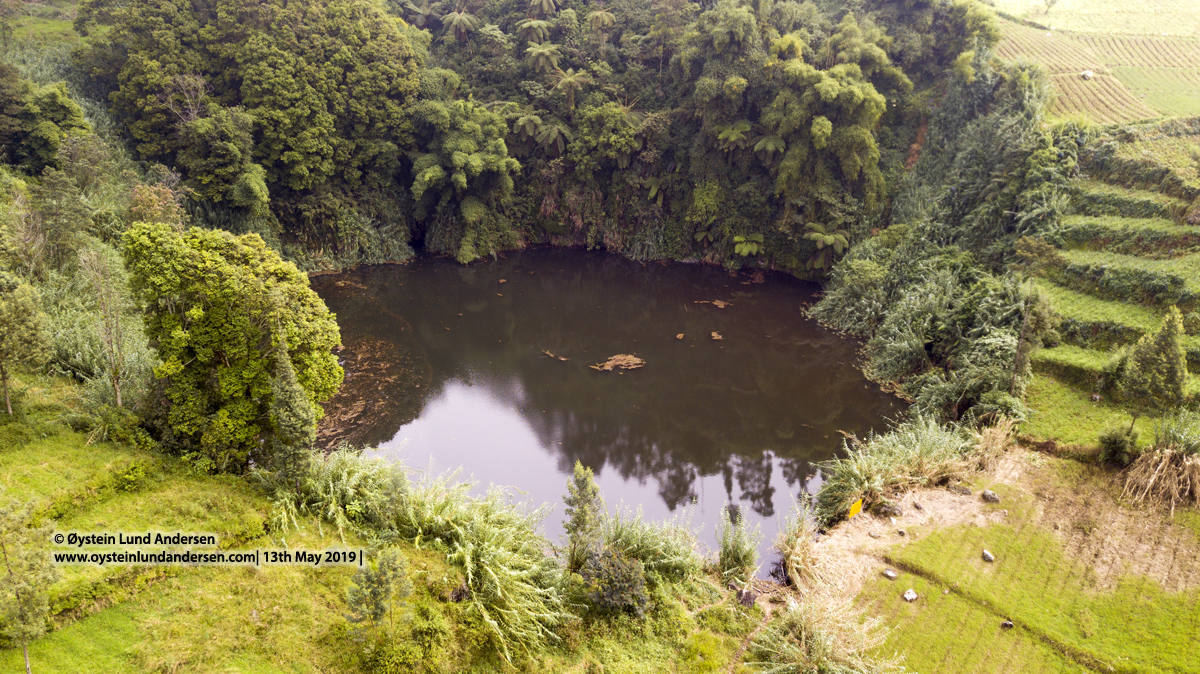




Timbang crater
The Timbang crater is located 1km SW of Sinila. 1928: “Phreatic eruptions of fresh blocks and clay matrix from three vents. Deposit more than 35 cm thick at the site of the former village of Timbang. Eruption preceded by
10 days of felt earthquakes. Eruption produced small mudflows and poisonous gases. One person killed by falling blocks” 1939: “Phreatic eruptions produced a series of 15 complex– craters or fissures. Deposit of fresh continued lithic blocks and clay matrix is more than 35 cm thick at the site of the former village of Timbang. The eruptions were preceded and accompanied by earthquakes. Eruption destroyed Timbang village and killed 10 people. Small mudflows were reported” There was also a small eruption on December 6 1954.
References/source:
-Eruptive History of the Dieng Mountains Region, Central Java, and Potentian Hazards from future Eruption. Open-File report 1983. USGS/PVMBG.
-EVALUATION OF INITIAL INVESTIGATIONS DIENG GEOTHERMAL AREA, INDONESIA (USGS, 1971)
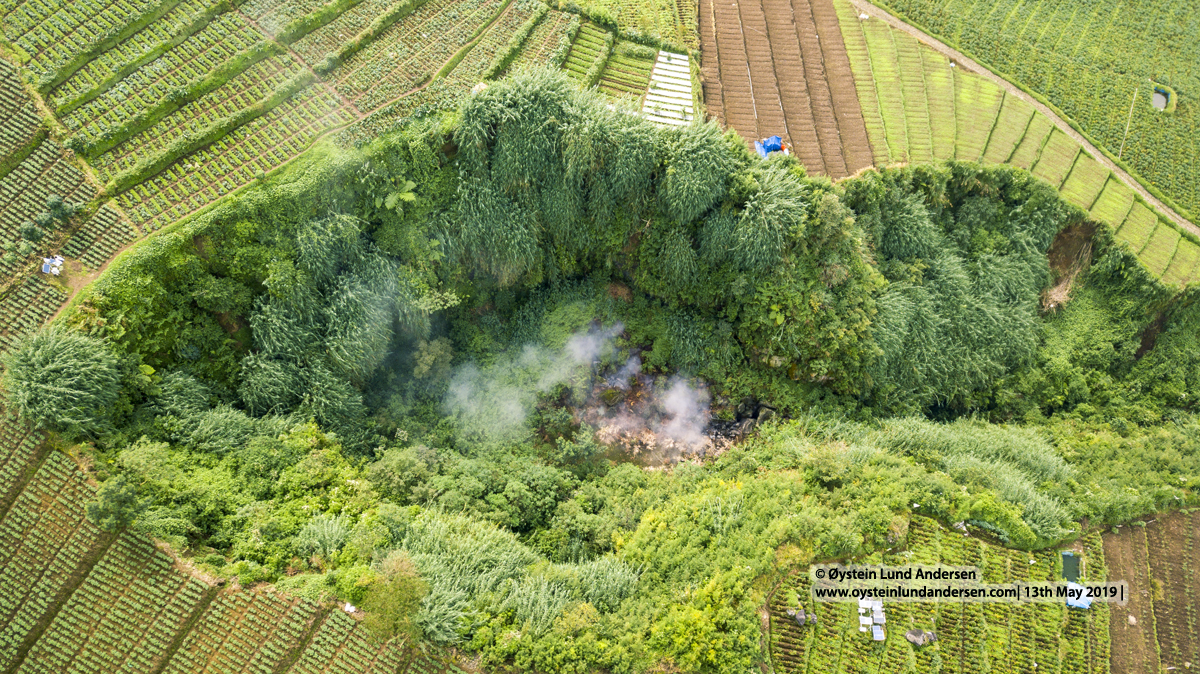
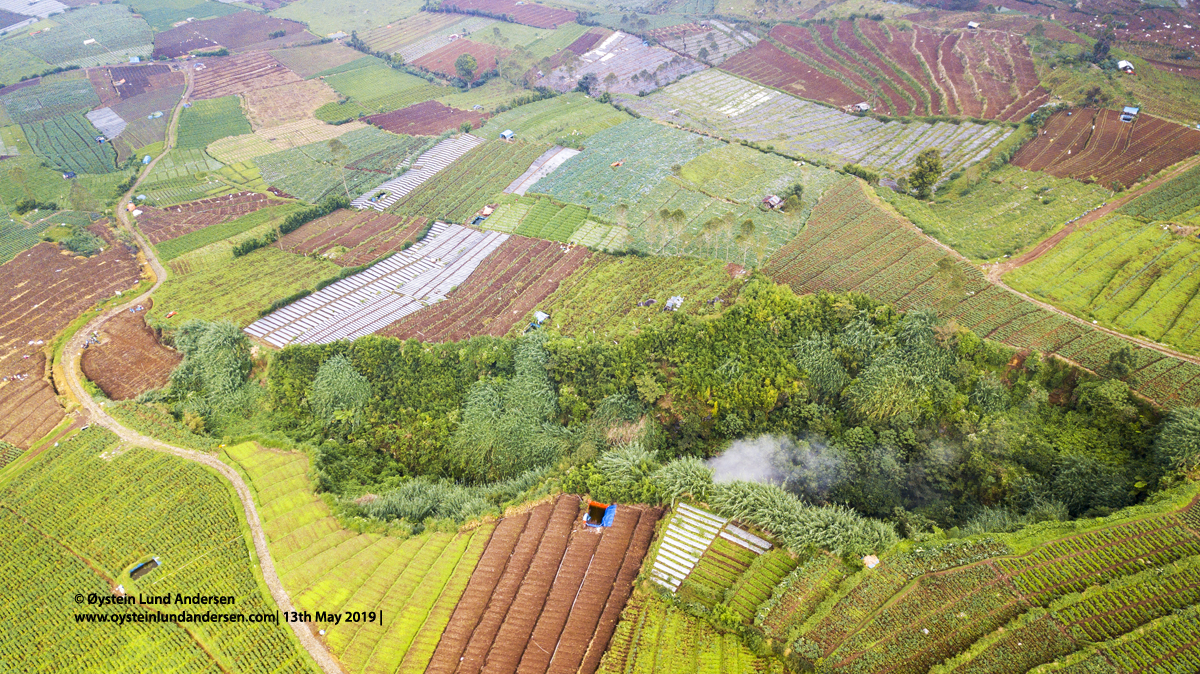
Jalatunda crater
The Jalatunda crater, known as Sumur Jalatunda in Indonesian. The crater is likely a single phreatic explosion crater. Prehistoric eruption have occurred here: “Deposit is more than 2 m thick on rim of crater. Data not collected on soil-profile development, so age relative to other craters unknown”
References/source: Eruptive History of the Dieng Mountains Region, Central Java, and Potentian Hazards from future Eruption. Open-File report 1983. USGS/PVMBG.
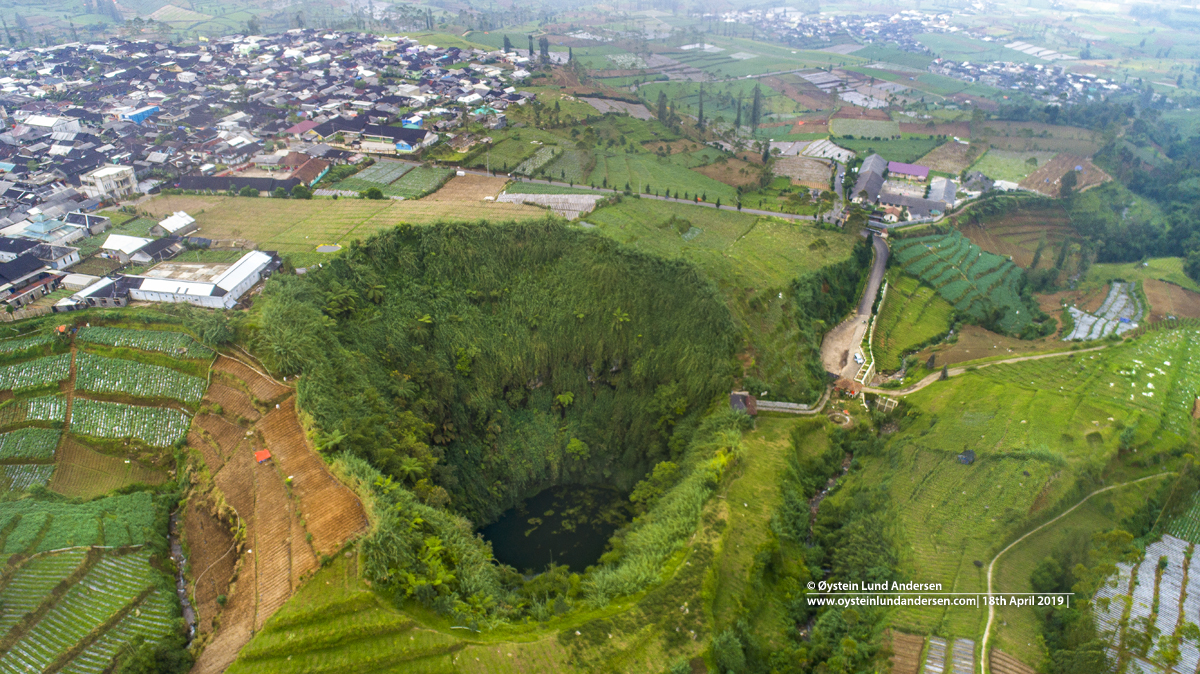
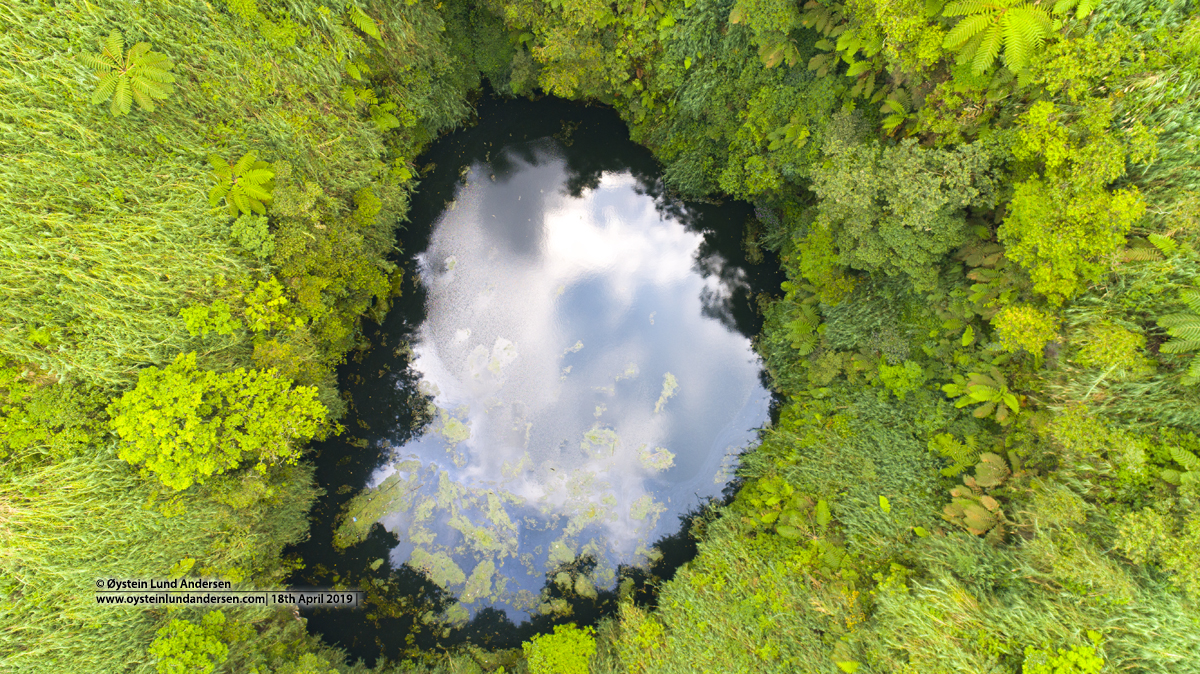
Candradimuka crater
The only known eruption in the Kawah Candradimuka area took place in December 1954, when a brief eruption was observed that ejected thick black smoke for half an hour. (Source:The Global volcanism Program)
When visiting the crater area in May 2019, me and the person I was visiting with, started to feel “light headed” when approaching the crater area (on a open road), about 100m before reaching it. We therefore decided to abort visiting the rim of the crater.
